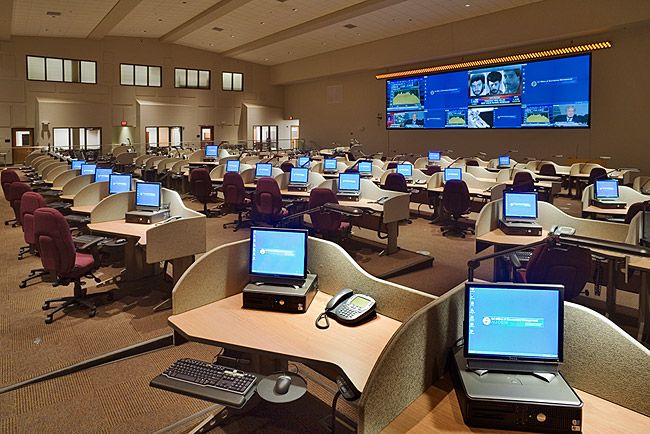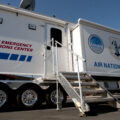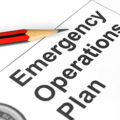
What is An Emergency Operations Center?
An emergency operations center (EOC) can be defined as a central command and control facility (physical or virtual) responsible for carrying out the principles of emergency preparedness and emergency management, or disaster management functions at a strategic level during an emergency, and ensuring the continuity of operation of a company, political subdivision or other organization.
Emergency management process mobilizes available resources to deal with emergencies effectively, thereby saving lives, avoiding injury, and minimizing economic loss. Major emergencies or disasters can cover several jurisdictions and may require large-scale government and voluntary agency response.
How Does Emergency Operations Center Work?
When an emergency threatens, hundreds to thousands of people may need to be warned and protected. Emergency services must be ready to care for the injured and to give shelter to those who cannot remain in their homes. Communications systems must be in place, and someone must direct the response activities. There must be ways to assess the damage caused by the emergency, to return people safely to their homes after the danger has passed, and to help people and businesses return to normal as soon as possible.
Efforts must be made to increase safety in the face of future emergencies. This protection process involves four phases of emergency management: mitigation, preparedness, response, and recovery.
Mitigation. This phase includes any activities that prevent an emergency, reduce the chance of an emergency occurring, or reduce the damaging effects of unavoidable hazards. Mitigation activities should be considered long before an emergency occurs.
Preparedness. This phase includes developing plans to ensure the most effective, efficient response; taking steps to minimize damages, such as installing forecasting and warning systems; and equipping the EOC for operations during an emergency.
A key component of the preparedness stage consists of training and exercising the EOC and the personnel and volunteers who will be staffing the EOC in an emergency.
Response. Response is the first phase that occurs after the onset of an emergency or disaster. It is intended to provide emergency assistance for casualties, including search and rescue, shelter, and medical care, to reduce the probability of secondary damage and to reduce damage by efforts such as sandbagging against impending floodwaters.
Recovery. The activities undertaken during this phase involve steps to return all systems to normal after an emergency. This phase includes such functions as redevelopment loans, legal assistance, and community planning. Experience shows that these phases are cyclical, rather than linear in their interrelationships. All activities and experiences lead individually and cumulatively back to the mitigation phase.
EOCs perform six functions in response to an emergency. Identify all six functions and explain two of the six functions
Modern trends list the six major functions that the EOC performs in response to an emergency as,
- Survivability
- Security
- Facility
- Communications/networks
- Sustainability
- Flexibility.
What are Emergency Operations Center EOC roles and Responsibilities?
The traditional EOC model is organized to carry out five major functions: command, planning, operations, logistics, and finance, each of which may be divided into sub-functional units. This organization is modeled after Incident Command System (ICS), allowing all involved parties to establish a common organization and terminology. According to ICS, the main functions operating from the EOC are:
Management and Control: Under the guidance of the EOC coordinator, this section has overall responsibility for the management and direction of all EOC activities including development, implementation and review of strategic decisions. Management directly coordinates with the EPG and ensures its strategic direction is implemented in EOC operations.
Operations: This section represents on-scene emergency responders and provides coordination between the EOC and field operations, including the ICP.
Planning and Intelligence: This section is responsible for receiving, evaluating and analyzing all disaster information and providing updated status reports to EOC management and field operations. The planning and intelligence section is also responsible for damage assessment and developing specialized technical assessments of events.
Logistics: Logistics is responsible for procuring supplies, personnel and material support necessary to conduct emergency responses (e.g. personnel call-out, equipment acquisition, lodging, transportation, food, etc.)
Finance and Administration Section: The section handles cost accountability, purchase authorizations, documentation and risk assessment.
Pre-designated personnel who understand their roles and responsibilities should staff the EOC. Identified representatives from local response agencies, contractors, volunteer agencies, and any other group with significant response roles may also be asked to support the emergency response from the EOC.
In order to manage the roles and responsibilities of each section, each EOC Section comprises specific functions called units and branches and is overseen by EOC section chiefs, who report directly to the EOC coordinator or the campus emergency director. Depending on the scope of an incident, some or all functions of a section may be activated.
When a reportable incident has a probability for a significant negative impact, the EOC may be activated. Initially the EOC may:
- Act as the communications link between corporate headquarters and the affected facility.
- Ensure that specifically trained response individuals are available or are being mobilized in the event their expertise is necessary.
- Ensure that necessary equipment is available on site. This may require ordering and arranging delivery of equipment and materials from contractors.
- Update relevant information on vendors, contractors, consultants, and other key resources that the Incident Commander and the Corporate Support Team will be utilizing.
- Monitor TV, radio, and wire services to determine accuracy of public information
- Update executive management as the incident transpires and changes.
- Ensure that all regulatory, state and local notifications and procedures are performed. Act as a liaison with Federal, State, and local regulatory agencies and officials affected by the location and specific nature of the incident.
- Ensure employees and the impacted community is adequately informed of the incident and response actions.
Simply establishing a specific location, and stocking it with response equipment and technology is not enough to coordinate an effective response. The EOC staff must be thoroughly trained, drilled in the proper processes and procedures, and understand specified roles and responsibilities for coordinating full-scale emergency response effort.




